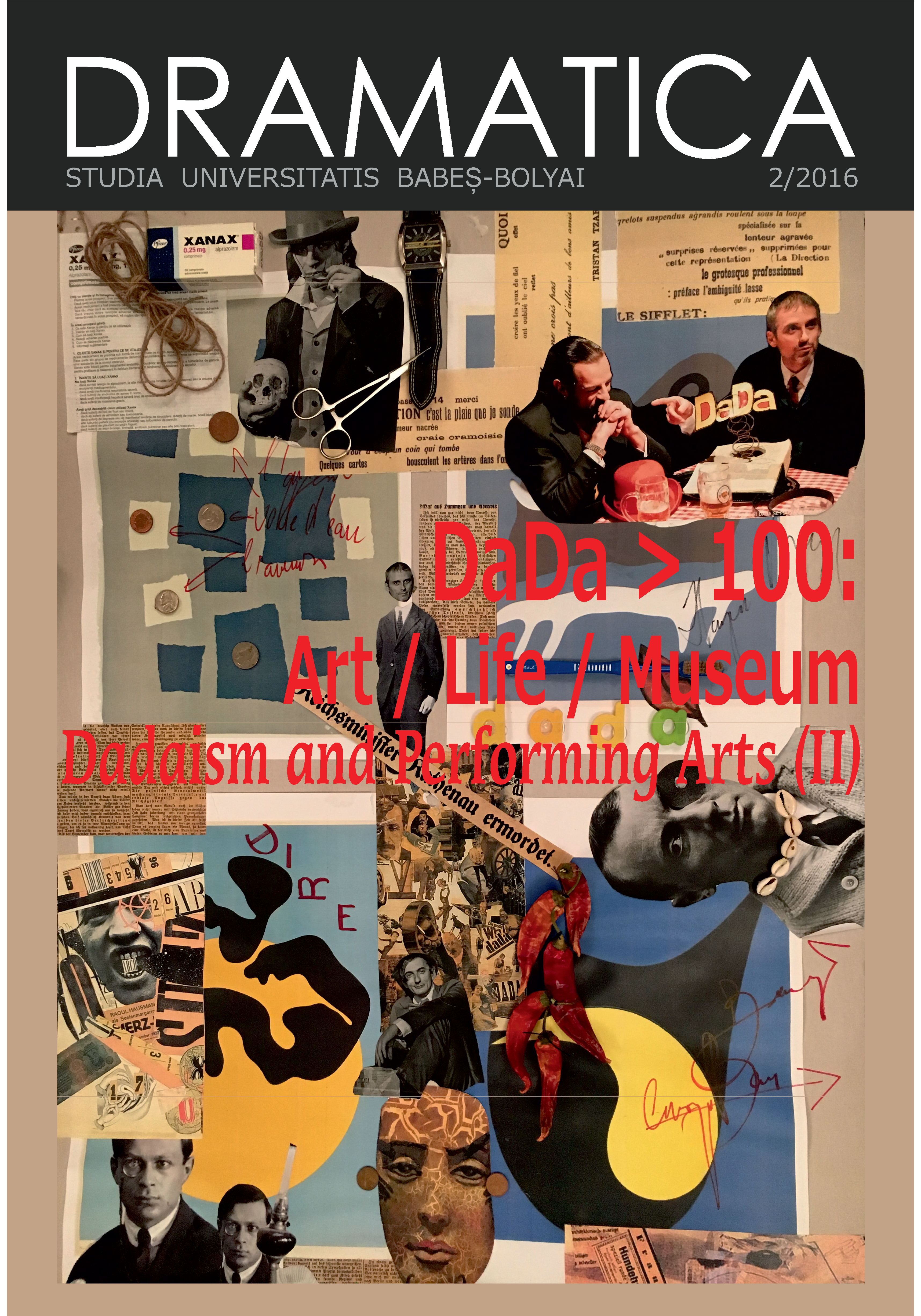De la théâtralité des manifestes dadaïstes
Keywords:
Dada, Tzara, theatricality, manifestos, clown, poetry.Abstract
On the Theatricality of Dadaist Manifestos. This paper tries to emphasize the theatricality of the Dadaist manifestos written by Tristan Tzara, linking it to the discoveries of poets such as Jules Laforgue or the futurists. A focus is put on the figure of the poet as clown, as buffoon, taking into account Jean Starobinski’s work Portrait de l’artiste en saltimbanque. The freedom of expression, the irony, the double language and the multiple linguistic games are all of them clear signs of the aforementioned theatricality.
References
BUOT François, Tristan Tzara. L’homme qui inventa la révolution Dada, Paris, Grasset, 2002.
BÉHAR Henri, Tristan Tzara, Paris, Oxus, 2005.
BÉHAR Henri, Étude sur le théâtre Dada et surréaliste, Paris, Gallimard, 1971.
GRISI Francesco (a cura di), I futuristi, Roma, Newton Compton Editori, 1994.
HENTEA Marius, Tata Dada. Adevărata viaţă şi celestele aventuri ale lui Tristan Tzara, Bucureşti, Tracus Arte, 2016.
IONESCO Eugène, Notes et contre-notes, Paris, Gallimard, 1959.
STAROBINSKI Jean, Le portrait de l’artiste en saltimbanque, Paris, Flammarion, Genève, Albert Skira, 1970
Tristan Tzara, l’homme approximatif. Poète, écrivain d’art, collectionneur, Musées de la ville de Strasbourg, 2015.
TZARA Tristan, Œuvres complètes, tome 1, 1912-1924, Texte établi, présenté et annoté par Henri Béhar, Paris, Flammarion, 1975.
Downloads
Published
How to Cite
Issue
Section
License
Copyright (c) 2016 Studia Universitatis Babeș-Bolyai Dramatica

This work is licensed under a Creative Commons Attribution-NonCommercial-NoDerivatives 4.0 International License.


